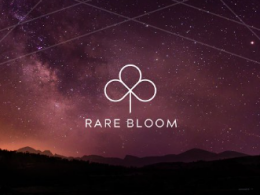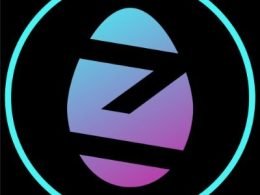Disclaimer: the following is an opinion article and should not be considered expert or professional legal advice or commentary.
June 5 and 6 of 2023 will forever live in the memory and history books of the cryptoasset class participants. The Securities and Exchange Commission (SEC) of the United States, led by chairman Gary Gensler, presented a lawsuit against Binance, the biggest exchange worldwide, and Coinbase, the biggest US exchange. The financial regulator alleges that both companies have been operating outside the law by acting as an exchange, broker and clearing agent of what they call “crypto asset securities”. Among them we can find respectable projects like Algorand ($ALGO), Filecoin ($FIL), Cosmos ($ATOM), Polygon ($MATIC), Coti ($COTI) and of course Cardano ($ADA).
But first, what is a security? A security, according to the definition provided by Investopedia, is “a fungible, negotiable financial instrument that holds some type of monetary value.” After the Wall Street crash of 1929 the biggest financial crisis in modern history took place. The ripples of the collapse of the New York Stock Exchange (NYSE) were felt across the globe. The wealth and excesses that made the “roaring twenties” a famous decade ended with a bang. The response from the United States government was to pass the Securities Act of 1933 in an effort to provide more transparency to investors and put an end to fraudulent activities in the securities markets, or at least that was the original intention.
The Howey Test
William John Howey was a real-estate developer and citrus grower in Florida during the 20th century. Through his corporations, named W. J. Howey Co. and Howey-in-the-Hills Service, Inc. He set out to sell interests in a citrus grove while claiming to be selling real estate, not securities. The transactions were recorded as real estate sales, which also included a service contract to cultivate and harvest the oranges. The buyers could have arranged to service the grove themselves but the majority relied on the efforts of Howey, for a return.
The SEC intervened, alleging that the service contract to cultivate the oranges was an investment contract and thus Howey Co. failed to disclose them with the regulatory body. The lawsuit reached the Supreme Court in May of 1946. The court’s final ruling determined the leaseback arrangements qualified as investment contracts. In doing so, the Supreme Court established four criteria to determine whether an investment contract exists. An investment contract is:
- An investment of money
- In a common enterprise
- With the expectation of profit
- To be derived from the efforts of others
Thus, the orange grove was an investment of money by the customers, it was a common enterprise between the buyers and Howey Co. There was an expectation of profit from the cultivation and harvesting of the oranges and this was derived from the efforts of Howey-in-the-Hills Service, Inc.
Since then, this Supreme Court case has been known as “The Howey Test”, the main legal tool to determine if something is a security or not. Let’s think about that for a second, a dispute regarding the cultivation of oranges is still used today, seventy-seven years later, to determine if a completely new technology and asset class is a security or not…
SEC vs Ripple
Before covering the recent lawsuit by the SEC against Binance and Coinbase and the implication of Cardano (ADA) being a security, lets first cover the original “crypto asset security” to be brought to justice in the cryptoasset industry, Ripple Labs and their token XRP.
On December 22nd, 2020 the SEC filed an action against Ripple Labs Inc. alleging that they raised over $1.3 billion through an unregistered, ongoing digital asset securities offering. The complaint alleges that Ripple raised funds, beginning in 2013, through the sale of digital assets known as XRP in an unregistered securities offering to investors in the U.S. and worldwide.
Stuart Alderoty, Ripple Chief Legal Officer, tweeted on September 17th, 2022 that “the SEC has been unable to identify any contract for investment (..) and cannot satisfy a single prong of the Supreme Court’s Howey test.” Referencing the four qualities set forth by the Supreme Court on the Howey Co. case.

More recently the current Ripple CEO, Brad Garlinghouse, during the Davos event in January 2023 stated during an interview with CNBC that they expect the judge to make a favorable decision this year since the facts are on their side. This will most likely be the biggest crypto related news of the year since the decision on the Ripple case, either positive or negative, will have a huge impact on the regulation landscape in the USA and will be setting a precedent that will impact the new cases against Binance and Coinbase.
Cardano’s test
The Cardano blockchain and its native token ADA was one of the thirteen tokens that appeared in both the Binance and Coinbase lawsuits by the SEC. The reason for being included seems to be that both exchanges provided staking-as-a-service for ADA. This means that the customers would deposit their tokens, transferring the ownership of the coins to the exchange for them to handle the staking on behalf of the customers.
The SEC argues that this proves the existence of an investment contract between the exchange and the customer. However, the SEC seems to have failed to conduct a proper research of the different protocols they are accusing of being securities. In the case of Cardano, a blockchain purposely designed to have liquid staking from inception, doesn’t require a third party to stake the tokens on behalf of the users. The same users are able to delegate their ADA and secure the blockchain from their own personal wallets in self-custody with just a few clicks. Since the activity of delegating the ADA to independent validators doesn’t require the user to lose ownership of their tokens, the whole premise of ADA being a security falls apart.
Here is where the classification of a commodity enters the discussion. The definition of a commodity according to Investopedia is “a basic good used in commerce that is interchangeable with other goods of the same type. Commodities are most often used as inputs in the production of other goods or services.” Based on this definition one could argue that ADA is a commodity since it is used in commerce and is interchangeable for other goods of the same type i.e. other cryptocurrencies. The second part of the definition mentions that “commodities are most often used as inputs in the production of other goods or services”, since users use their ADA to secure the blockchain they are using this cryptoasset as an input in the production of a service, which is securing the blockchain and all the different protocols and decentralized applications that run on top of it.
In the United States the entity that regulates commodities is called the Commodity Futures Trading Commission or CFTC. In September 2015 the regulatory body stated that Bitcoin is a commodity and not only that, in their own website they state that bitcoin is a virtual currency and all virtual currencies are commodities under the Commodity Exchange Act (CEA). This further proves the regulatory confusion around cryptoassets in the USA, where one regulatory agency claims one thing and the other one the opposite.

Even though we already established that Cardano’s native token ADA is a commodity and not a security under the current definition of commodity and ruling by the CFTC, lets entertain Mr. Gensler and see if Cardano staking passes or fails the Howey Test. Even though no investment contract exists when a user exercises staking in a decentralized and self-custodial way.
Point number one, there must be “An investment of money”. The SEC claims customers bought ADA as an investment of money expecting a future profit for holding the asset. This point would be true, but the small print dictates that this investment of money is performed in the primary market (during the ICO which took place in Japan outside the jurisdiction of the SEC). As Charles Hoskinson points out in this recent tweet.

Point number two, “In a common enterprise”. This point refers to the parties that participate in the investment contract the SEC alleges exists between the exchange and the customer. In centralized staking this could be true since customers are giving up the ownership to their tokens and entrusting the exchange to stake the tokens on their behalf. However, once again, this doesn’t exist and it’s not a requirement when staking directly with the protocol as it was intended in the original design of the consensus algorithm.
Point number three, “With the expectation of profit”. This one is closely related to the first point since an investment of money is always done with the expectation of profit. The same caveats apply from point number one but it’s also important to highlight that the economic reward from staking in Cardano is a product of the work being done by the delegator. This work being securing the blockchain, validating transactions and creating blocks. Therefore, the expectation of profit is not solely dependent on holding the asset (speculating like you would by holding the stock of a public company) but utilizing this commodity to produce a service for the ecosystem.
Final point, “To be derived from the efforts of others”. This again would apply to the staking-as-a-service provided by Binance and Coinbase to their customers since they are staking the ADA on their behalf. However, as mentioned previously, this is not true when the user interacts directly with the blockchain in a decentralized and self-custodial way. It’s the user itself that is performing the action of securing the blockchain by delegating their ADA with a stake pool or validator. The only job the stake pools perform is representing the users in front of the consensus algorithm, named Ouroboros in Cardano. The reward they receive from this work is directly distributed by Ouroboros and not the validator or stake pool operator. Users are also free to stop delegating, move their delegation somewhere else or spend their ADA at any given time, thanks to the liquid staking mechanism that differentiates the Cardano Proof-of-Stake algorithm from every other in the industry.
Final thoughts
I hope this mental exercise of analyzing the definition of securities, commodities and applying the Howey test to Cardano provides you a better understanding of the current struggles by the establishment to try to fit a whole new asset class, technology and market dynamics inside two outdated definitions and a very old court case. This struggle is the same reason why during the first years of bitcoin and the cryptoasset class most financial analysts were calling it a scam, because it didn’t fit inside their worldview of the financial system (which was the whole point). Now we are seeing the same thing play out in the legal arena. While some bureaucrats argue which outdated definition of financial asset fits better, the gears of progress and innovation continue to turn and will continue to do so, with or without the United States of America.










